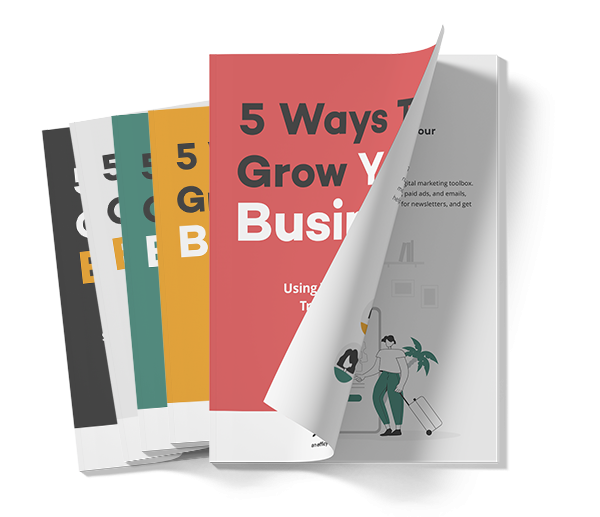Enrich the Customer Experience with Advanced E-commerce Recovery
The customer journey is can be complicated, and a prospect doesn’t simply end up at your doorstep. As a consequence, it’s crucial that you as a marketer stimulate your customers with incentives, boosts and nudges in order to steer your customers towards a conversion.

Thankfully, here’s where e-commerce recovery takes centre stage. However, if you feel that you have the basics down, it’s time to advance!
With the help of a RFM frame of analysis, you’ll be able to advance your tactics to a whole new level of customer retention and cost-efficiency.
Did we spark some interest? We’ll guide you through it!
In a rush? Here are the main points of this article:
-
E-commerce Recovery is a method of turning lost customers and abandoned carts into active customers.
-
With the help of RFM (recency, frequency, monetary value) analysis, you gain insights to the individual customer’s recency, frequency and monetary value.
-
This, in turn, helps you to enrich and optimise the customer experience through personalisation...
-
… which increases the effectiveness of your abandonment tactics, your recovery rate and your revenues!
What Does E-commerce Recovery Recover?
In the dire case that you’ve missed out on our previous posts on e-commerce recovery, we’ll guide you through the very basics. In essence: e-commerce recovery recovers lost customers and turns their abandonment into profit. Consider the following stats:
-
A mere 2% of your website visitors will end up as paying customers
-
76% of website visitors abandon their carted items
Ouch!
However, there’s a cure for the revenue-bleeding ailment of e-commerce: abandoned cart tactics and browse abandonment tactics. As a matter of fact, with a gentle little nudge in the form of an email, you can rekindle products interest and as an effect recover 10% of your seemingly lost purchases.
Ready for the Next Step? Let’s Optimise with RFM
With e-commerce recovery, it’s important to use a crawl-walk-run approach. But as soon as you’re standing with your feet on solid ground, it’s time to move and advance your strategy with RFM-based recovery models.
But what is RFM, exactly? RFM (abbreviation of recency, frequency and monetary value) is a scoring-method used to analyse customer value and with the goal to discover the most valuable customers in terms of contribution to conversion rate.
In essence: RFM optimises your conversion rate by pinpointing your most valuable customers and customer segments with the presumption that future actions are based on the past ones.
RFM is based on the following metrics:
-
Recency: How recently did the customer purchase? This metric can be broken down and customers can be categorised based on certain time restraints ranging from 0-90 days, 91 days to 365 and so forth.
-
Frequency: How often do they purchase? It’s a metric to establish how frequently the individual customers and customer segments purchases your products or services.
-
Monetary Value: How much do they spend? This is a point of measurement where you extract the order value over a certain period of time.
In other words, marketers use the RFM model to score each customer based on their purchase date(s), number of orders and their cumulative order value over a set period of time.

RFM Extracts Customer Activity Patterns...
The RFM-model is based on the universal principle that customers with high recency are more willing to open, click and convert and that the frequent customers are more willing to buy. Furthermore, it builds upon the probability that big spenders are more eager to return for another purchase. Of course, there are exceptions, but this formula is considered a universal rule of thumb.
As an effect, you’ll be able to weight customer segments against each other in order to determine in which segment you should allocate marketing resources. Furthermore, as you gain insights to each particular segment within the RFM-framework, you’ll be able to tailor and direct messages according to customer value.
… Which Heightens the Sense of Personalisation
As a RFM analysis increases customer understanding, it’ll help you to establish and deepen your segmentation as well as your customer profiles. You can see what customers and customer segments are the most valuable in regards to revenues as well as which customers should be nourished as loyal brand ambassadors.
As you gain insights to behavioural patterns, you’re able to personalise and optimise the customer experience by sending out timely and relevant recovery emails based on metrics such as prior purchase recency, frequency and order value.
Furthermore, with the help of your insights to customer value, you’re able to merge your revenue goals with targeted unique messaging and personalised offers. Who needs an extra push to become activated? And what scoring segment should we target with what types of messages and campaigns in order to retain and push for sales?
With increased customer knowledge, comes an improved customer experience tailored to customer preferences.
How can RFM Influence Your Abandonment Tactics?
A RFM analysis gives you valuable insights that helps you to determine the incentive value threshold you’re willing to offer customers that have abandoned their shopping carts. The next step is to ask yourself questions such as: who needs a little push to become activated?
For instance: a customer or a customer segment with high recency, frequency and monetary value needs different stimuli in order to rekindle their product interest and recover their abandoned cart. Basically, you’ll know that extra little incentive you’ll have to offer in order to nudge the customer to return to your site and finalise the purchase!

RFM and Product Recommendations
Product recommendations is a powerful tool that’ll help you to recover and spur customers to return. As a matter of fact, successful personalised product recommendations can be attributed to 31% of your total website revenue.
In regards to an RFM analysis, The mid- to high scoring are more susceptible to product recommendations as they have previously demonstrated a fondness towards your products. As an effect, they might be easily persuaded to repurchase or purchase a similar product.
If you study and apply their monetary value to their recency and frequency, you’ll gain insights to the recommended price range of the product recommendations. If the customer has a high frequency and recency, yet low monetary value, chances are they regularly buy low-value products. As an effect, recommendations of a similar value are most likely to boost the particular scoring segment towards a purchase.
However, this doesn’t mean that you should completely refrain from product recommendations of a higher price point: just because a client has a pattern of low budget products, doesn’t mean that he or she won’t splurge!
To sum it all up: with the advancement of e-commerce recovery through a RFM-analysis, you gain knowledge that’ll decipher your most valuable segments. As an effect, you’ll be able to target, boost and maximise your email’s level of personal relevance according to each customer segment’s level of engagement. It’s a win/win situation!
Ready to take a leap? Book your personal demo today!



